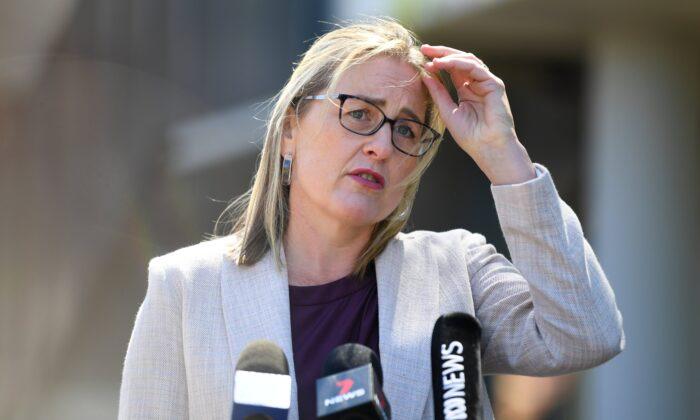The latest data from the Australian Bureau of Statistics (ABS) reveals a significant decline in migrant arrivals during 2023-24, dropping to 667,000 from 739,000 the previous year—a 10 percent annual decrease.
This marks the first dip since the reopening of international borders, following a 73 percent increase in arrivals in 2022-23.
Pre-pandemic migration trends averaged 515,000 arrivals annually, with temporary visa holders comprising the majority (307,000).
The 2023-24 figures reflect a similar pattern, albeit at a reduced scale, with temporary visa holders accounting for 465,000 arrivals.
While the number of arrivals fell, there were modest increases in permanent visa holders, Australian citizens, and New Zealand citizens, highlighting a shift in migration dynamics.
Meanwhile, migrant departures saw a slight uptick, rising by 8 percent to reach 221,00. Although this is notable, it still remains below pre-pandemic levels.
Experts Link Decline to Policy and Economic Pressures
Experts attribute the drop to stricter visa regulations, caps on specific categories, and delays in visa processing.“Global economic conditions have also played a role in shaping migration flows,” said Annathurai Gnanasambandam, director of Visa Help Australia.
Independent economist Saul Eslake views the decline as a natural adjustment post-pandemic.
“The spike in 2022-23 was driven by pent-up demand, especially among international students and skilled workers,” he noted.
“The current decline reflects a return to more typical migration patterns, alongside government tightening of student visa caps.”
Eslake contextualised the figures by referencing long-term migration trends.
“Migrant arrivals over the four years to 2023-24 totalled 1.98 million,” he explained.
This is slightly below the 2.12 million recorded in the four years to 2019-20.
Migration Decline Risks Labour Shortages
Experts warn that a continued reduction in temporary and permanent visa holders could exacerbate labour shortages in critical sectors like healthcare, education, and IT.Smaller states and regional areas, which rely heavily on migration for workforce and population growth, are particularly vulnerable.
“A decline in skilled migration may slow productivity and innovation,” Gnanasambandam told The Epoch Times.
“It could also lead to economic impacts, especially in industries dependent on foreign expertise.”
Eslake echoed this concern, noting a drop in the annual growth rate of the working-age population from 3 percent in early 2023 to 2.4 percent by late 2024.
“Slowing immigration will result in reduced workforce growth,” he said.
“Migrants are more likely to participate in the labour force, and fewer arrivals may lower overall participation rates in the future.”
Impact on Temporary Visa Holders and Students
The ABS data shows that temporary visa holders remain the largest migrant group despite a drop from 557,000 arrivals in 2022-23 to 465,000 in 2023-24.International students, the largest subgroup within temporary visas, saw a sharp decline from 278,000 to 207,000. Other categories, such as visitors, working holidaymakers, and temporary skilled workers, also experienced decreases.
“International students are critical not only for the education sector but also for broader economic activity,” Dr. Gnanasambandam emphasised.
“A reduction in this group could have cascading effects on housing, retail, and community services.”
India Continues to Lead Migration Trends
India remains a dominant migration source, though net gains from India and China in 2023-24 were lower than the previous year.In contrast, arrivals from the United Kingdom and New Zealand increased. The period also saw a net loss of 22,000 Australian-born individuals.
Migration agent Ramneek Madahar highlighted the role of bilateral relations in driving Indian migration. “The Australia-India Free Trade Agreement and educational partnerships have made migration pathways smoother,” he said. “The growing Indian community here is a significant draw for others seeking to relocate.”
Political Debate Over Migration Management
The shifting migration landscape has ignited political debate, with the Coalition criticising the Albanese government’s migration policy.Shadow Treasurer Angus Taylor has been critical of the government for failing to manage immigration effectively. “It’s not complicated: managing both arrivals and departures effectively is key. Labor has failed on both fronts.”
Treasurer Jim Chalmers defended the government’s migration strategy, saying it is designed to ensure Australia’s migration system operates in the national interest. “Net overseas migration has already decreased from its peak levels and is now at its lowest point since the pandemic,” he said.







